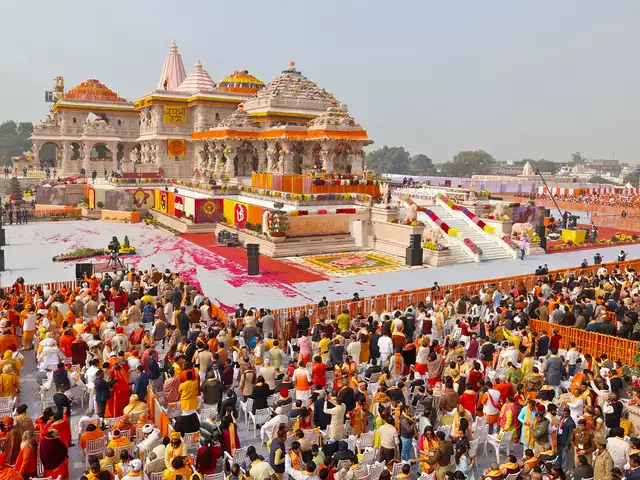Ram Mandir: Cultural Production or Cultural Renaissance?
Image courtesy: The Economist
The consecration of the Ram Lalla idol in Ayodhya was unparalleled in that the entire nation united in welcoming it. Across the length and breadth of the country, the majority Hindu community rose as one, disregarding divisions of sect, class, caste, etc. It even resonated with people of other faiths in society, many of whom took part voluntarily in the celebrations. The Indian Union Muslim League (IUML) officially welcomed the event. And why only within the country, even people in many other countries joined the festive mood.
This groundswell of emotions impels one to revisit the notion of culture – how it evolves and how it operates. The left intellectuals have always viewed culture as something to be produced a la material products by the state, whereas the conventional view of culture has been that it is born of tendencies that organically germinate in a community over time and for which no single source is responsible.
The Marxists look at the cultural tendencies, forms, values, and practices as being manipulated by the material structure at the base and controlled by the ruling class which foists its value system on society. They believe culture can be produced through the apt use of law, education, and discourse at large. Institutionalized culture industry was the term coined to denote this source and process. Contemporary exponents of popular culture look at movies, television, music, and literature of our times as the only manifestations of culture.
This view was harbored in post-independence India by an avowedly secular and socialist Prime Minister Jawaharlal Nehru, who was deeply influenced by Soviet Russia. Nehru took it upon himself to steer the people out of what he thought was religious darkness. Religion, even though it has been the most significant constituent of any culture – more so in India – was sought to be relegated to the private domain. People were presented with an abstract notion of religion that had nothing to do with the state. However, things were different at the ground level.
The failure to effect the shift was also due to a political problem. In a democracy, for the leaders to keep themselves away from all types of religious ceremonies, personages and organizations meant failure to get the votes of a vast majority. So, not many politicians practice it in their personal or political life. This idea was never practiced strictly even in Western countries from where the notion of secularism emerged. The inauguration of the American President with a Bible in hand or the pledge “in God we trust,” as also the investiture of the British monarch in Westminster Abbey performed by the Archbishop, and the king/queen undertaking to be in the “service of the people of the country, and service of God,” have always had the religious ring around them.
The problem is that the leaders at the helm of affairs in post-independence India identified culture merely with expressive symbols and believed that these only stirred the affective and cognitive processes associated with faith. They failed to recognize the human spirit and wanted to effect a tectonic shift towards a thoroughly materialistic view of life. Indian culture has always stressed a holistic approach in which the physical joins the mental and the spiritual. How was it possible to make people forget their culture during these 70-odd years under left-leaning governments at the Centre that could not be decimated during the thousand years of slavery? It is the people at large – regardless of their education, profession, status, or location who have retained culture in whatever proportion. The cultural legacy continued to find expression in periodic Kumbh Melas, pilgrimages to the various dhāms or temples strewn across the country, or the observance of rituals and worship at home.
The fact of the matter is that it is just not possible to render every human impulse and sentiment in what the Marxist jargon calls “reified” form. Had it been possible to create or annihilate culture through these strategies, then Russia, and more so China would have been without a trace of ancient religions. But as anyone conversant with life there knows religions like Taoism, Buddhism, Christianity, etc. continue to be practiced by people, and the governments there recognize them.
Culture in its overt and covert forms has evolved gradually since man inhabited the earth through social give-and-take, while statecraft developed later. While political consciousness is attained consciously, cultural values and beliefs enter to stay eternally in the human heart rather unconsciously. It is also true that the Western formulation of culture is straitjacketed whereas the Indian viewpoint is holistic. The Ram Mandir symbolizes the urge among Indians to reclaim ancient heritage that is life-giving and uplifting in life and that appeals to all right-thinking people.

